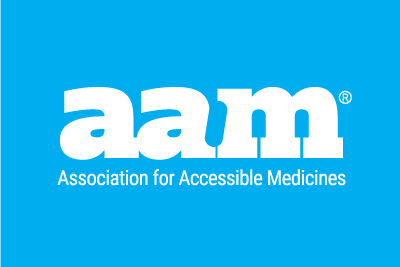The U.S. Food and Drug Administration (FDA) plays a critical role in keeping Americans healthy. When it comes to drug approvals, the FDA’s scientists and regulators strive every day to keep pace with the most current advances in science so that patients can benefit from innovative, safe, and effective medicines.
The FDA continues to work to clear a backlog of Abbreviated New Drug Applications (ANDA), and the agency has accelerated the process overall to meet the metrics set forth under the Generic Drug User Fee legislation for drug application review. That is clearly a victory for patients and their families who seek more affordable prescription medicines.
End of story, right? Not so fast.
While the FDA undoubtedly deserves applause for expediting its processes, a series of policy miscues, abuses of current law, and market factors have converged to result in a situation in which the rate of generic and biosimilar medicines actually reaching and staying on the market has not kept pace with the rate of ANDA approvals. Our internal data have shown that only 45 percent of approved ANDAs make it to the market.
In baseball, a .450 batting average will get you into the Hall of Fame, but in our industry, with lives on the line, it’s not nearly good enough.
Americans are concerned about drug prices; however, it is competition in the market, not ANDA approvals, that lowers prices. In other words, increasing the number of ANDA and biosimilars approvals is a necessity, but it is not a sufficient condition for affordability.
There are several clear trends that have resulted in approved drugs aren’t making it to the marketplace. First, there’s well-documented abuse of the patent system by some brand-name pharmaceutical companies. Writing in IP Watchdog, Arie Michelsohn observes, “Rather than representing true innovation, we find drug patents that emerge through loopholes in our drug-patent system, which artificially extend patent term on rather trivial differences over the original drug.”
Second, federal and state policies intended to address skyrocketing drug prices tend to paint the pharmaceutical industry with too broad of a brush, ignoring the differences in business models between brand-name drug companies and generic manufacturers.
An EY overview of state drug-pricing laws summarized, “In the face of federal uncertainty, consumer pressure has spurred states into the policy void. Since 2016, hundreds of drug pricing proposals have been introduced in state legislatures across the US…This patchwork of state efforts is challenging for pharmaceutical companies and other stakeholders to navigate and monitor.”
The Trump administration’s blueprint on drug pricing may turn out to be a stabilizing and effective force, but at the same time, our industry is deeply concerned about ramifications of the U.S.-Mexico-Canada Agreement (USMCA, known informally as NAFTA 2.0). Uncertainty around the prospect of new legislation and treaties that delay access to generic or biosimilar medicines threatens the entire generic and biosimilar industry.
What’s the upshot of these factors? For those generic medicines fortunate enough to reach the market, conditions are worsening for them to stay on the market. These conditions can lead to product discontinuations and shortages. The market is becoming inhospitable for generic medicines. Simply put, generics are undervalued, a dynamic that threatens the sustainability of the industry. Some commentators point to imports as a solution, but for the most part this is an unworkable gimmick that fails to address the root causes of the problem. AAM is grateful for the FDA’s leadership on ANDA review, but until more of those approved drugs actually make it to the marketplace—and most importantly to patients—there is more work to be done.
By Chip Davis, AAM President and CEO




